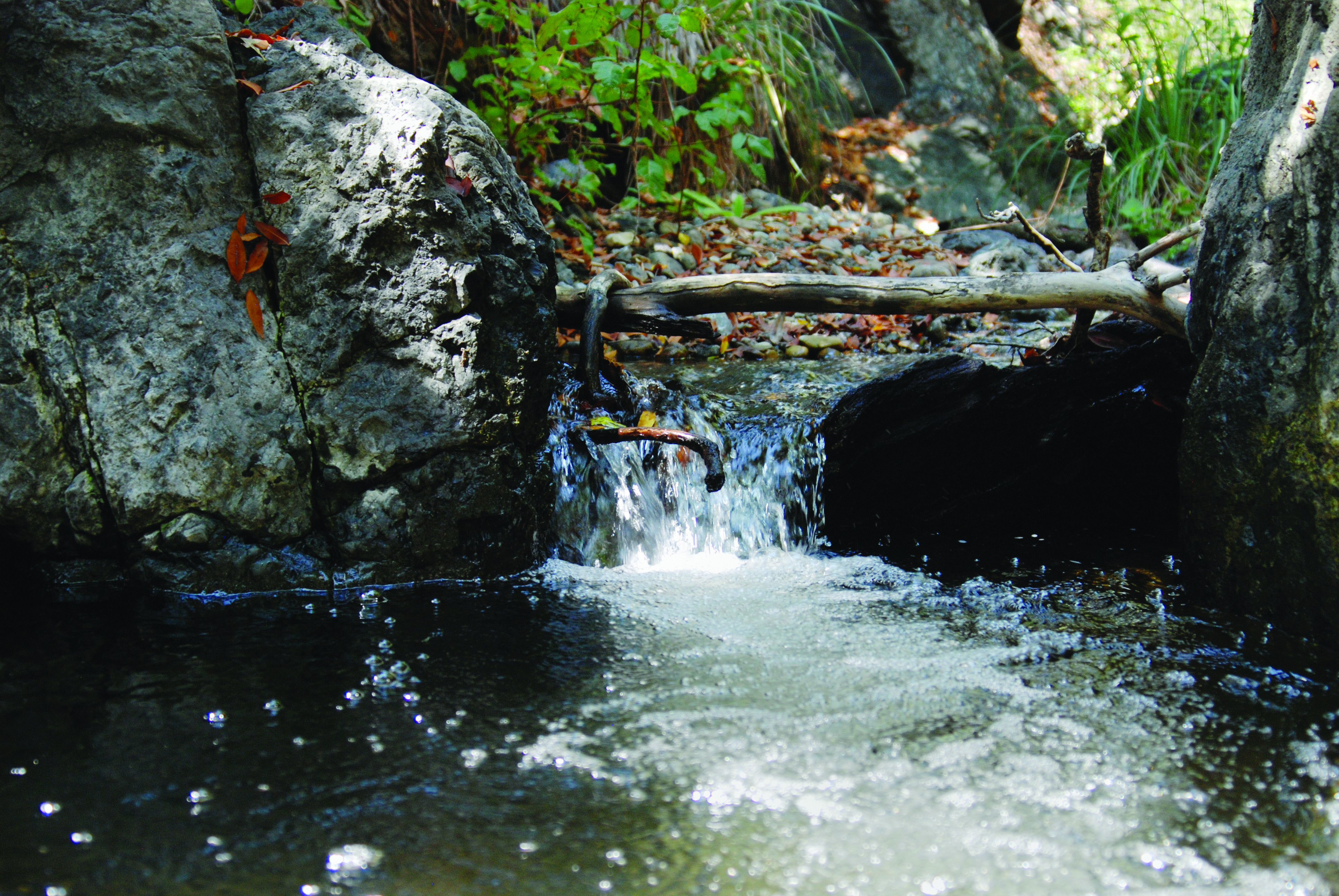The cold clear waters of Pennington Creek provide a home to many species, including our iconic steelhead. Pennington Creek is also home to the California Polytechnic State University (Cal Poly) Escuela Ranch and the Rancho El Chorro Outdoor School. The Estuary Program works with these landowners and other partners to protect and enhance habitat in and around the creek for sensitive species like steelhead. During 2017, we collaborated to put past projects to good use and to complete groundwork for important upcoming projects.
Helping the Waters Run Clear
At Cal Poly’s Escuela Ranch, the university is training the next generation of ranchers in grazing and rangeland management practices that will help them run thriving businesses while protecting the land. Interspersed throughout the landscape are rural roads that allow access to remote pastures and troughs. Due to the steep terrain and unstable soils, these roads can be a significant source of sediment to nearby streams, which carry the sediment into the estuary.
When creek bottoms become choked with silt, fish eggs are buried and cannot survive. The sensitive bugs that are the preferred food of fish are also lost. Between 2014 and 2016, the Estuary Program partnered with Cal Poly to repair and stabilize road sites to reduce this sediment source. Work on Cal Poly, Camp San Luis Obispo, and U.S. Forest Service lands treated 11.4 miles of road and is expected to prevent 1,225 tons of sediment from road erosion each year over the next decade. The project held up well during 2017’s rains.
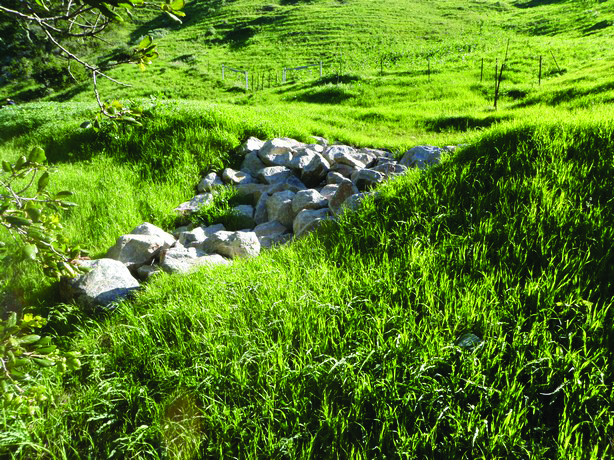
The Rancho El Chorro Outdoor School, located downstream from Cal Poly’s ranchland, provides environmental education for children. In its 40-year history, more than 250,000 students have participated in its programs. Pennington Creek winds its way through the 250-acre campus, and the school’s curriculum incorporates it as a hands-on teaching tool. Unfortunately, rainwater that falls on the campus can run off the roofs and pavement, carrying sediment and other pollutants into the creek.
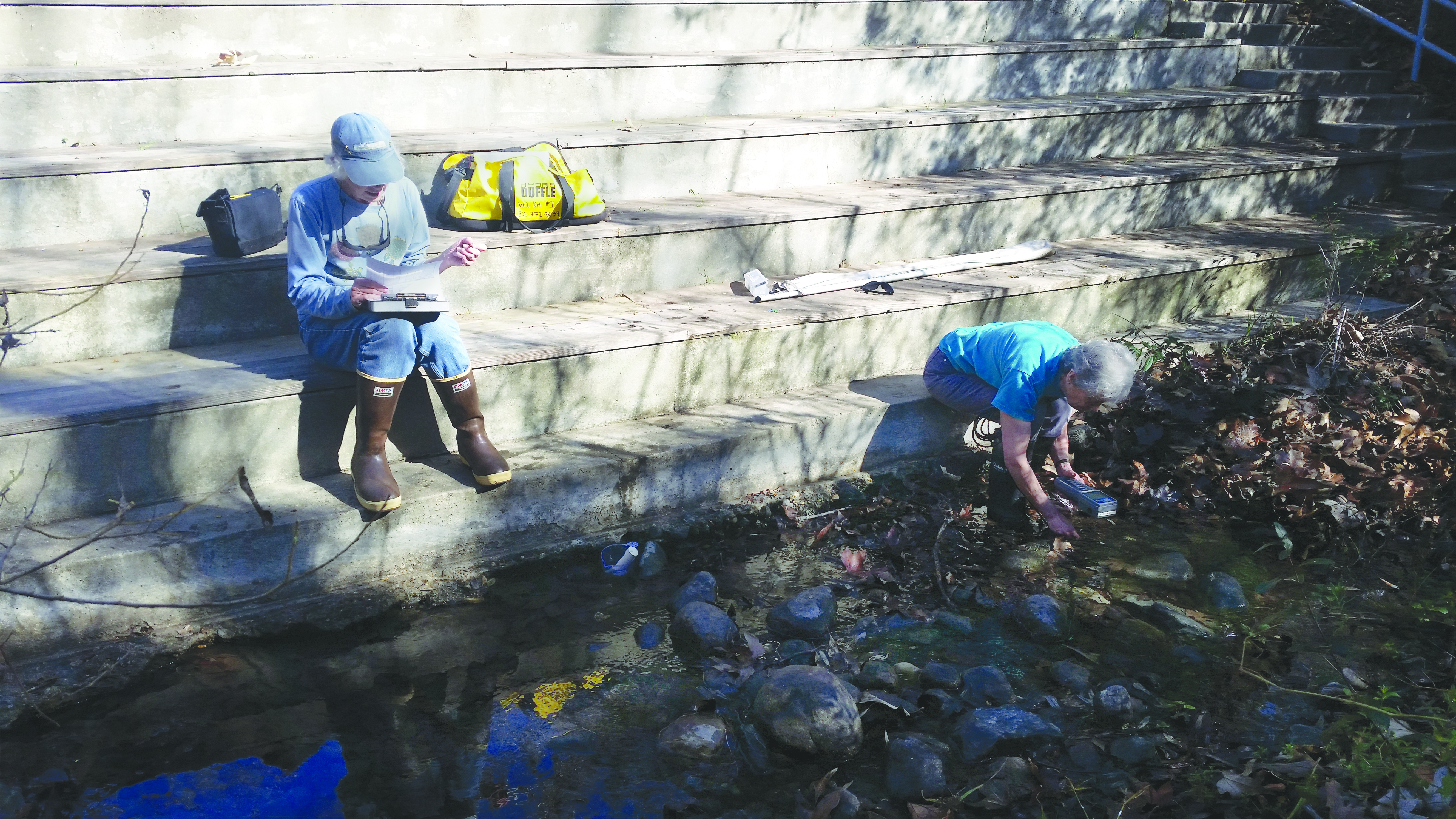
In order to address this problem, the school has partnered with Trout Unlimited, a national non-profit organization dedicated to protection of coldwater fisheries. Work is underway to construct a wetland nestled in the campus. Runoff will be directed to the wetland, so that it can be naturally treated before flowing into Pennington Creek. This prevents sediment and other contaminants from reaching the creek. The designs have been completed, and project construction is expected to begin in the summer of 2018. The Estuary Program is conducting creek monitoring for the project and will assist the school in developing educational content to teach children about this new feature of the campus.
Keeping Water in the Creek
The quantity of water in our creeks is just as important as its quality. Maintaining creek flows during the dry summer months is crucial to fish survival. To help keep more water in the creek for the fish, the Estuary Program partnered with Cal Poly, National Oceanic and Atmospheric Administration (NOAA), and California Department of Fish & Wildlife (CDFW) to build a rainwater harvesting system that directs water from the rooftops of Cal Poly’s Beef Center into four 70,000-gallon tanks. During the dry summer months, Cal Poly ranchers use the stored water to supply cattle troughs, which reduces the use of creekside wells.
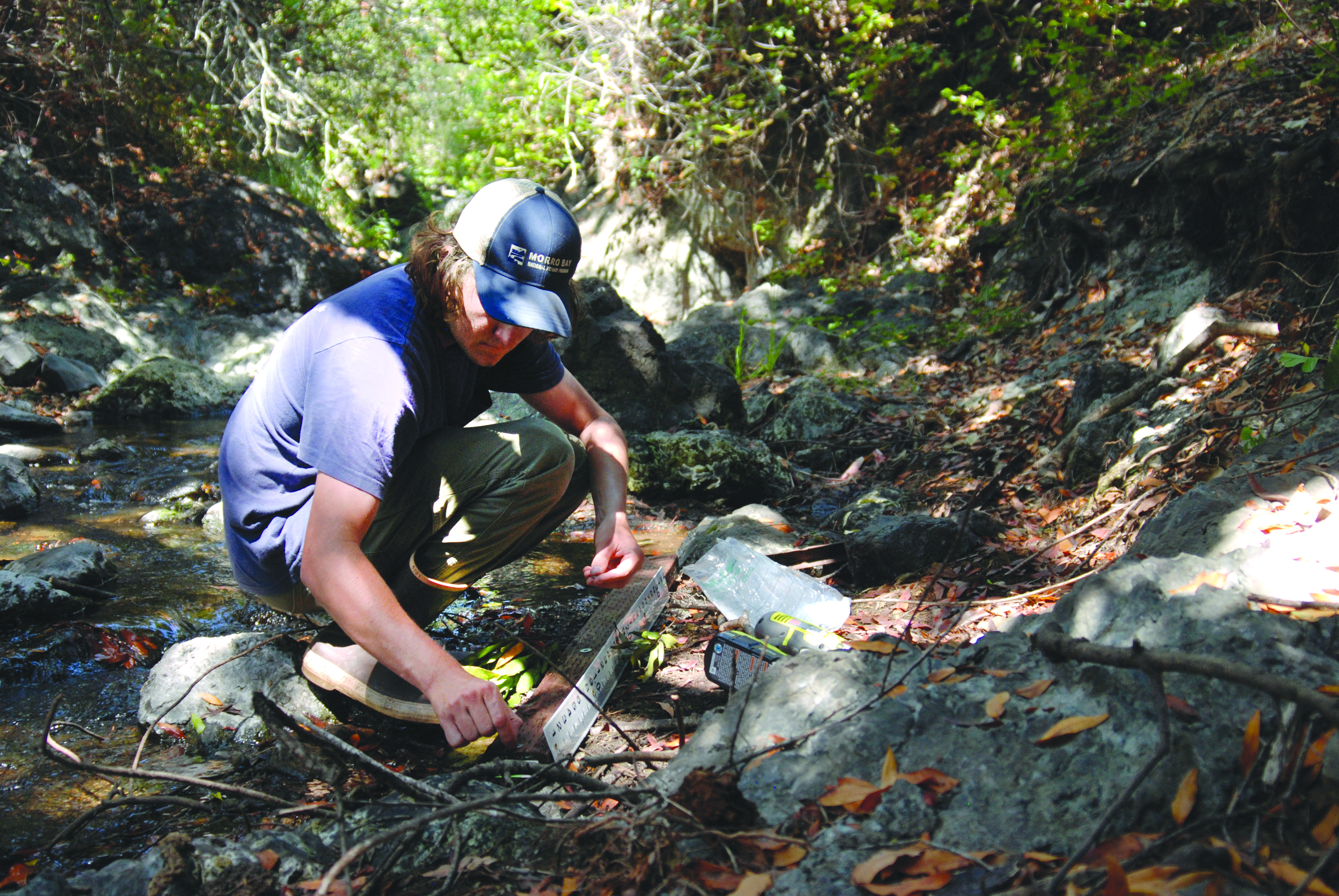
Free to Roam
High quality habitat and adequate water levels benefit fish only if they can access these portions of the creek. Nearly ten years ago, the Estuary Program was part of a project that removed a 25-ton concrete slab that had fallen into Pennington Creek and created a barrier to fish migration. The next project to address the issue of fish passage will replace an aging fish passage structure and improve a water diversion to keep more water in the creek. This is a Trout Unlimited project, in partnership with NOAA. The Estuary Program is responsible for monitoring water quality and quantity in the creek, both before and after the project. The project designs are nearly complete, and permitting is well underway. Construction is slated to begin in the summer of 2018.
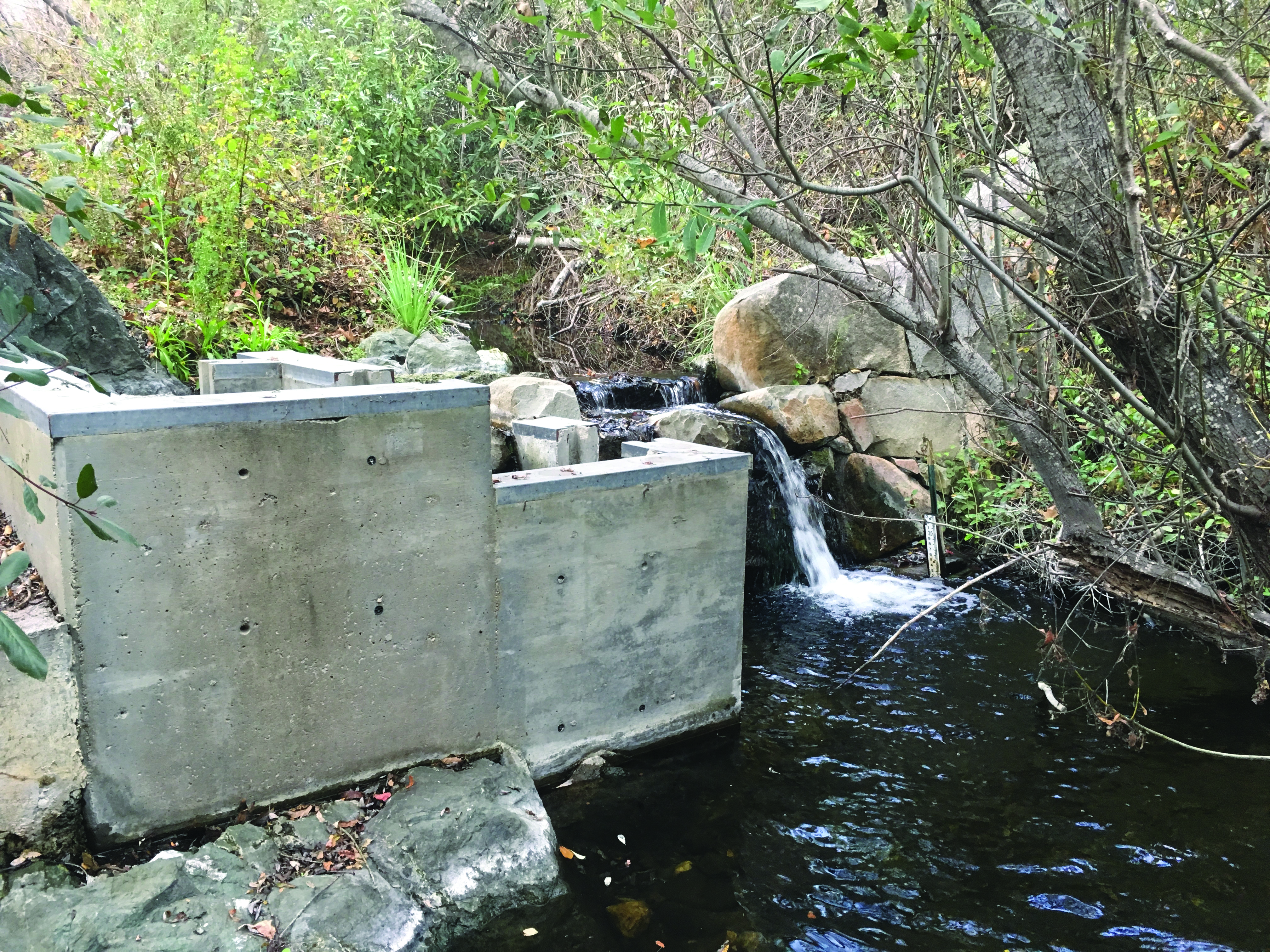
Looking to the Future
We feel fortunate for the efforts of partners like Trout Unlimited, NOAA, Cal Poly, the County Office of Education, CDFW, and others. With the projects we’ve already accomplished together, our upcoming work, and the management of responsible landowners, Pennington Creek will be protected for people and for wildlife for generations to come.
